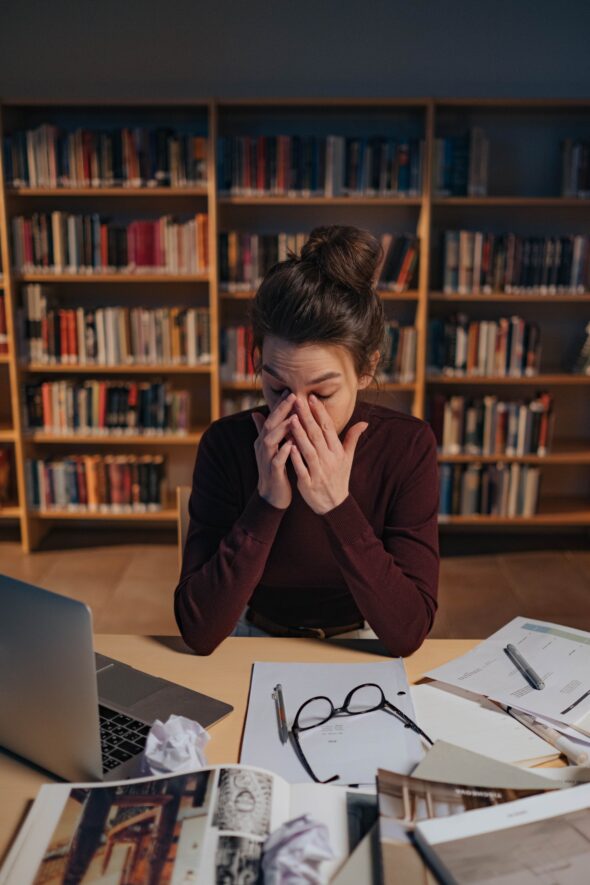
What Causes Eye Strain?
Posted August 31, 2021Over the past year and a half, as more activities have moved online due to the pandemic, we’ve all become more aware of the risks posed by too much screen time. Even prior to the pandemic, the average person spent more than seven hours on a computer each day. Too much exposure to the bright backlight of screens can cause computer vision syndrome, with symptoms including headaches, blurred vision and dry or itchy eyes. But computer vision syndrome is only one type of eye strain. Any time you ask your eyes to work too hard, or for too long, they become fatigued. Preventing this eye fatigue is key to avoiding irritating side effects.
Common Causes of Eye Strain
Just like any other part of your body, eyes can become fatigued by overuse. Your eyes are especially at risk of strain if you have a prior eye condition, such as uncorrected vision or muscle imbalance. If you’re already stressed or tired, you’re more likely to experience symptoms of eye strain, too.
Common, everyday activities, when performed for extended periods of time, are the most likely cause of eye strain. These activities include:
- Reading (especially in dim lighting)
- Driving long distances
- Being exposed to dry moving air, such as from a fan or air conditioner
- Exposure to bright light
While you may not be able to entirely avoid these circumstances, you can help your eyes recover by taking breaks or combatting eye dryness with over-the-counter eye drops.
Why Do Eyes Get Tired?
There’s actually a biological explanation for why eyes get tired. Looking at very bright or very dim objects can lead to your pupils working harder than normal. And extended focus on a stationary object, such as a book, computer screen or the road in front of you, exhausts the muscles that aim and focus your eye. You also tend to blink less often when you’re focusing, which can lead to dry or itchy eyes.
These are two common symptoms of eye strain. Other symptoms include: blurred vision, headaches, sore neck, shoulders or back, or the feeling that you can’t keep your eyes open.
How to Treat Eye Strain
Scheduling periodic rest for your eyes, if possible, is the best way to prevent eye strain. Experts recommend following the 20-20-20 rule, which suggests that every 20 minutes, you look away from your point of focus to an object at least 20 feet away, for at least 20 seconds.
If you can’t prevent eye strain entirely, you can treat it. Blinking or yawning will help lubricate your eyes to combat dryness. Rolling your eyes works similarly to stretching when your muscles are tired. “Palming” your eyes, by placing your hands over your closed eyes and pressing gently, can also offer some relief.
If these techniques don’t relieve your symptoms, your eye problems may be more complicated than simple fatigue, and you should consult an optometrist. You can get in touch with the doctors at Invision via our website.
